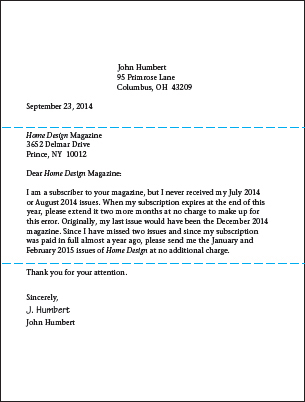Getting the details right
Perhaps the most important detail in a business letter is keeping the format you use consistent and correct. Be sure to print your letter on good-
Use consistent margins and spacing. Generally, 1-
Finesse the greeting. Write to a particular person at a firm or institution. Address him or her as Mr. or Ms. — unless you actually know that a woman prefers Mrs. You may also address people by their full names: Dear Margaret Hitchens. When you don’t have a name, you might use a person’s title: Dear Admissions Director or Dear Hiring Manager. Or you can fall back on Dear Sir or Madam or To Whom It May Concern, though these forms of address (especially madam) are increasingly dated. When it doesn’t sound absurd, you can even address the institution or entity: Dear Exxon or Dear IRS — again, this is not a preferred form.

Distribute copies of your letter sensibly. Copy anyone involved in a message, as well as anyone who might have a legitimate interest in your action. For example, in filing a product complaint with a company, you may also want to send your letter to the state office of consumer affairs. Copies are noted and listed at the bottom of the letter, introduced by the abbreviation CC (for courtesy copy).
Spell everything right. Be scrupulous about the grammar and mechanics too — especially in a job-

Photocopy the letter as a record. An important business letter needs a paper copy, even when you have an electronic version archived: The photocopied signature may mean something.
Don’t forget the promised enclosures. A résumé should routinely accompany a job-
Fold the letter correctly and send it in a suitable envelope. Business letters always go on 8½ × 11-